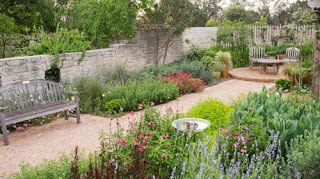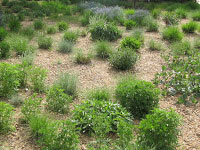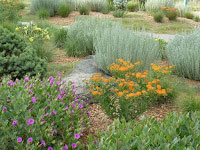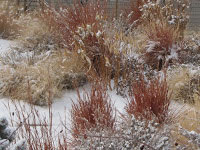
If you take the time to plan out your yard (or even just a small section of it), it can save you time, money and back aches down the line. Redoing your yard, whether you’re starting with a blank slate or just wanting to try something new, can often be overwhelming. Move through the process outlined below and before you know it, you’ll be reaping the rewards of a beautiful, well planned out yard/garden!!
Elements – visual descriptors of features in your garden
- Line – used to direct physical movement and draw attention to areas of garden
- Form – the skeleton of the space, the 3-D mass of shapes. Helps determine the style of garden
- Texture – how course or fine a surface is. Provides interest, variety and contrast
- Color – FUN! What people tend to focus on most in planting design
- Smell – fragrant plants (flowers and leaves)
- Sound – wind, water, wind chimes, etc.
Principles – guidelines we use to arrange the elements
- Order – spatial layout
- Scale/Proportion – size of an object relative to another object
- Repetition – repeating elements, plants, materials give rhythm to space
- Unity – creates consistency, harmony
Design Process:
- Find some inspiration!!
– Online, magazines, neighbors, nurseries - Determine your desires/needs
– Style
– Uses: play area, dog area, outdoor kitchen, urban habitat - Do a site inventory and analysis
– Find your opportunities and constraints (highlight a specimen tree; can’t move your A/C unit, have to design around it)
– Climate
– Topography
– Soils
– Microclimate - Design
– Draw it out (even if it’s rough)
– Try different ideas (drafts)
– Incorporate elements and principles - Planting plan
– Seasonal interest (Choose plants that will provide interest all year long)
– Sizes
– Shapes
– Water use
– Maintenance (How much are you willing to do? Choose plants that fit your interests and ability and you’ll be more successful).
 spring |  summer |
 fall |  winter |
Perhaps the most important thing to remember about switching things up and tackling garden design is: HAVE FUN!! Our gardens are our sanctuaries, our stress relief, our therapy sessions, our exercise routines, our play areas and so much more. They teach us patience and open us up to the wonders of the natural world.



